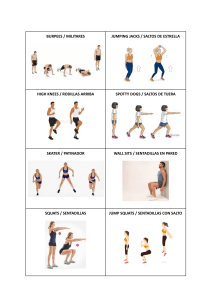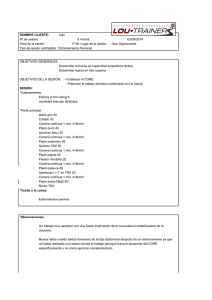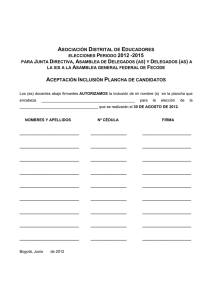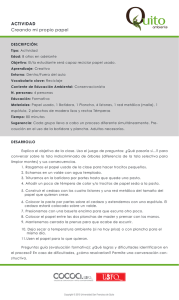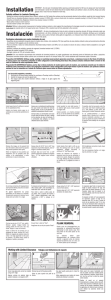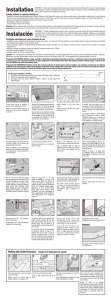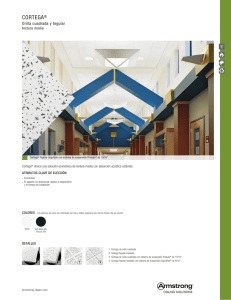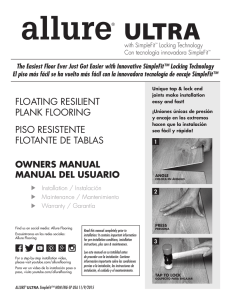INSTALLATION INSTRUCTIONS APPLICATION
Anuncio
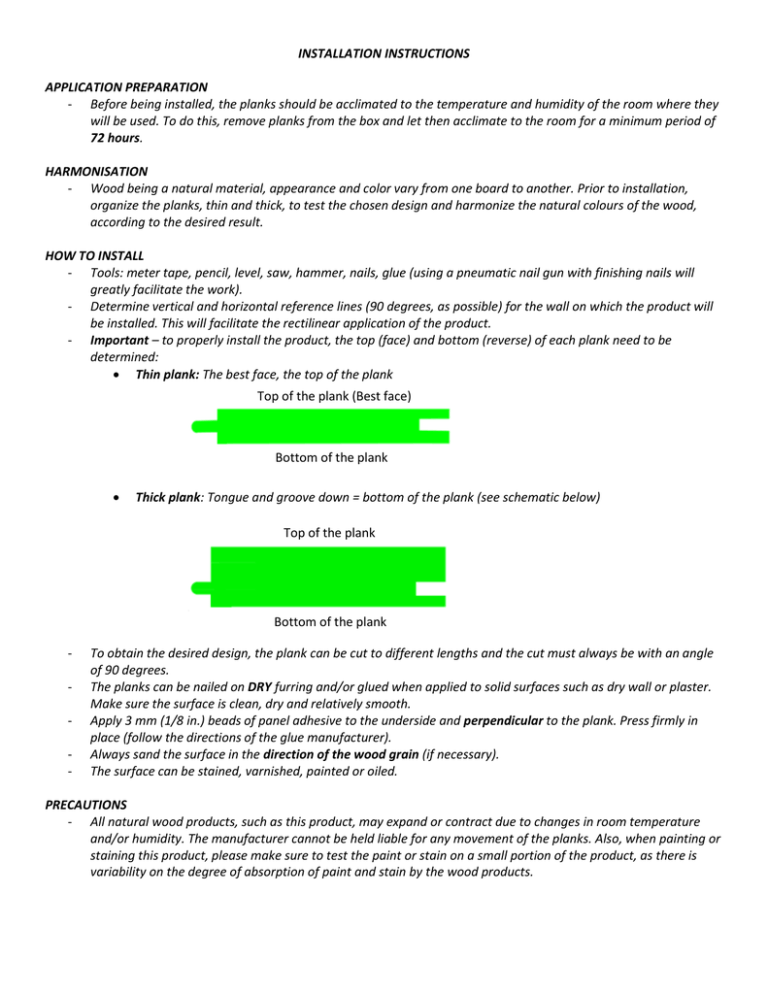
INSTALLATION INSTRUCTIONS APPLICATION PREPARATION - Before being installed, the planks should be acclimated to the temperature and humidity of the room where they will be used. To do this, remove planks from the box and let then acclimate to the room for a minimum period of 72 hours. HARMONISATION - Wood being a natural material, appearance and color vary from one board to another. Prior to installation, organize the planks, thin and thick, to test the chosen design and harmonize the natural colours of the wood, according to the desired result. HOW TO INSTALL - Tools: meter tape, pencil, level, saw, hammer, nails, glue (using a pneumatic nail gun with finishing nails will greatly facilitate the work). - Determine vertical and horizontal reference lines (90 degrees, as possible) for the wall on which the product will be installed. This will facilitate the rectilinear application of the product. - Important – to properly install the product, the top (face) and bottom (reverse) of each plank need to be determined: Thin plank: The best face, the top of the plank Top of the plank (Best face) Bottom of the plank Thick plank: Tongue and groove down = bottom of the plank (see schematic below) Top of the plank Bottom of the plank - To obtain the desired design, the plank can be cut to different lengths and the cut must always be with an angle of 90 degrees. The planks can be nailed on DRY furring and/or glued when applied to solid surfaces such as dry wall or plaster. Make sure the surface is clean, dry and relatively smooth. Apply 3 mm (1/8 in.) beads of panel adhesive to the underside and perpendicular to the plank. Press firmly in place (follow the directions of the glue manufacturer). Always sand the surface in the direction of the wood grain (if necessary). The surface can be stained, varnished, painted or oiled. PRECAUTIONS - All natural wood products, such as this product, may expand or contract due to changes in room temperature and/or humidity. The manufacturer cannot be held liable for any movement of the planks. Also, when painting or staining this product, please make sure to test the paint or stain on a small portion of the product, as there is variability on the degree of absorption of paint and stain by the wood products. GUÍA DE INSTALACIÓN PREPARACIÓN ANTES DE LA APLICACIÓN - Antes de instalarse, las planchas deben ser aclimatadas a la temperatura y humedad de la habitación donde serán utilizadas. Para ello, saque las planchas de la caja y deje que se aclimaten a la pieza al menos por 72 horas. ARMONIZACIÓN - Las planchas, al estar hechas de madera, varían en apariencia y color. Antes de la instalación, organice las planchas delgadas y gruesas, con el fin de probar el diseño escogido y así armonizar los tonos naturales de la madera de acuerdo al resultado deseado. MÉTODO DE INSTALACIÓN - Utensilios necesarios: cinta métrica, lápiz, nivelador, sierra, martillo, clavos, pegamento (la utilización de una pistola de clavos neumática con clavos de acabado facilitará enormemente el trabajo). - Determine el ángulo horizontal y vertical del muro (90 grados si es posible) donde el producto será instalado. Esto facilitará la aplicación rectilínea del producto. - Importante - Para una instalación apropiada del producto, se debe determinar la parte superior (cara) y la parte inferior (reverso) de cada plancha: Plancha delgada: la mejor cara hacia arriba Parte superior de la plancha (la mejor cara) Parte inferior de la plancha Plancha gruesa: Machihembrado hacia abajo = parte inferior de la plancha (ver esquema inferior) Parte superior de la plancha Parte inferior de la plancha - - Para obtener el diseño deseado, las planchas pueden y deben ser cortadas sobre el largo y en un ángulo de 90 grados. Las planchas pueden ser clavadas sobre listones de madera SECA y/o pegadas sobre superficies de yeso. Asegúrese que la superficie utilizada esté limpia, seca y suficientemente lisa. Aplique líneas de 3 mm (⅛ de pulgada) de pegamento para paneles sobre el dorso de la plancha y de manera perpendicular a ésta. Presione firmemente para fijarla en su lugar (siga las instrucciones del fabricante del pegamento). Siempre lije la superficie siguiendo la veta de la madera (si es necesario). La superficie puede ser teñida, barnizada, pintada o aceitada. PRECAUCIONES - Todos los productos de madera natural, como éste producto, pueden expandirse o contraerse como consecuencia de cambios de temperatura y/o humedad del ambiente. El fabricante no puede ser responsabilizado de ningún desplazamiento de las planchas. Además, asegúrese de probar la pintura o el tinte sobre una pequeña parte de la plancha porque el grado de absorción de la madera puede variar.
